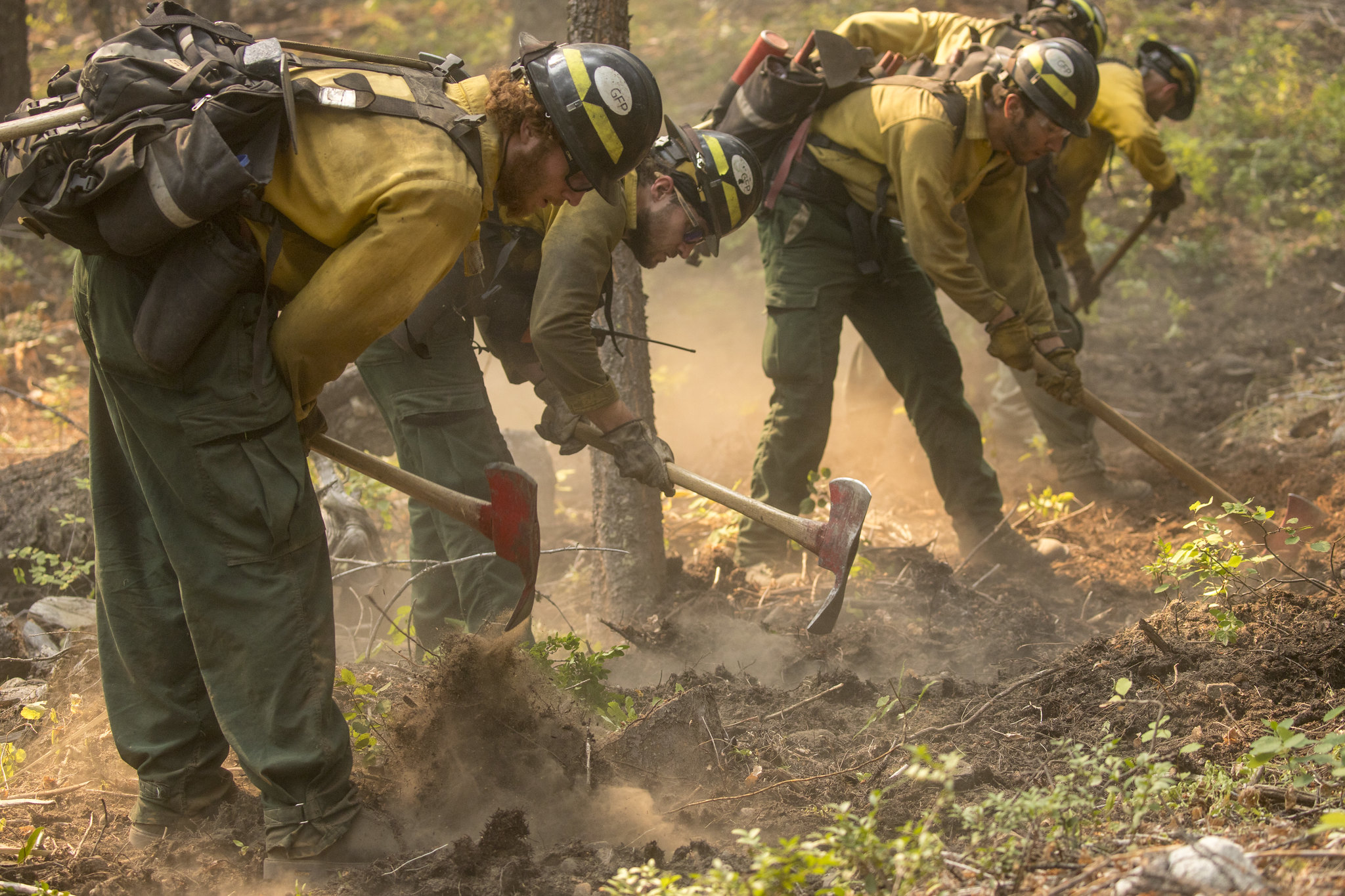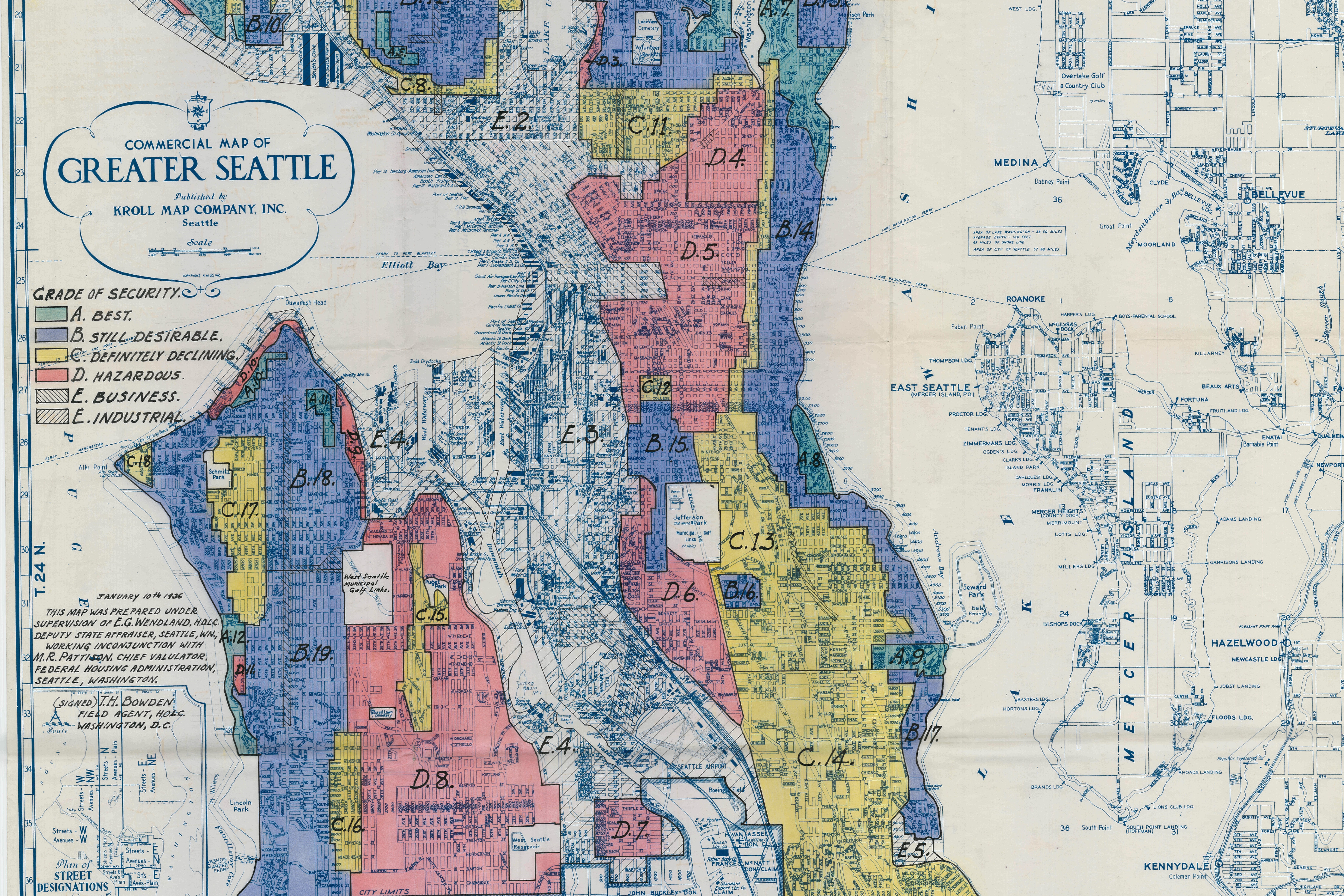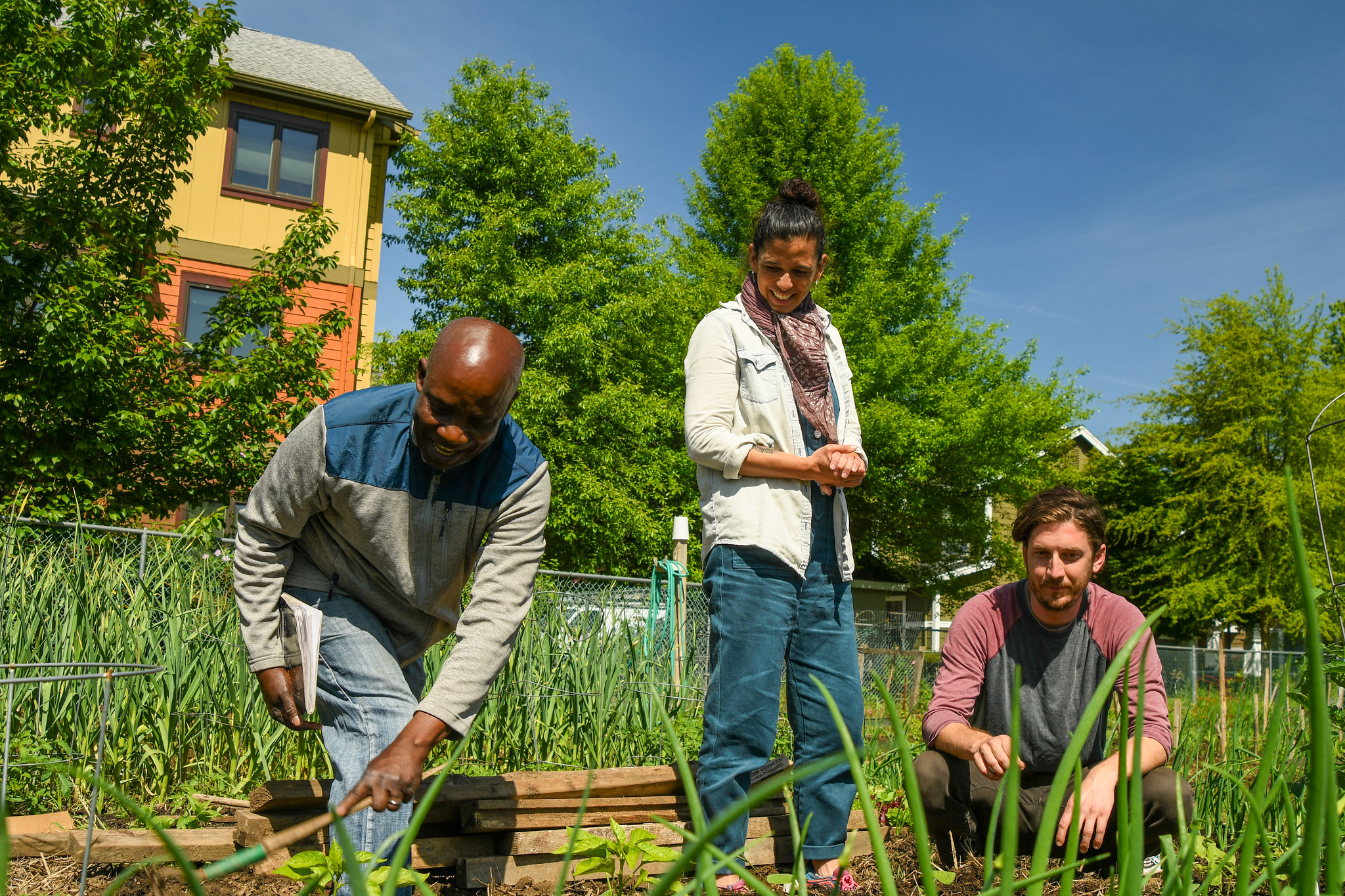Estimated reading time: 7 minutes
Here at the Northwest Climate Hub, we recognize that the effects of climate change may have caused damage or distress to many of our readers. Reading about climate change may be triggering, so if you are suffering from mental health impacts because of climate change, please reach out to the Disaster Distress Helpline.
Key Points
- Severe weather and natural disaster events can have direct and indirect effects on mental health, such as depression, substance abuse, and post-traumatic stress disorder. Marginalized communities encounter increased burdens.
- The effects of longer-term climate change, such as drought and increasing temperatures, have equally significant impacts on mental health.
- The mental health impacts of climate change do not affect all people equally. Native Americans and Alaska Natives, outdoor and emergency workers, and economically disadvantaged communities are among the hardest hit.
- Maintaining and improving mental health will require varied and adaptable approaches as the climate in the Northwest continues to change.
- There are many valuable mental health and climate adaptation resources available for a wide array of groups and individuals.
Climate Change Affects Our Mental Health
From tundra to oak savanna, sagebrush steppe to coastal rainforest, Northwest ecosystems provide housing, recreation, food, and income to support over 15 million people, including 43 federally recognized tribes in Idaho, Oregon, and Washington, and 228 federally recognized Alaskan tribes and Alaska Natives, as well as other tribes. These ecosystems are being affected by the gradual impacts of climate change (e.g., rising temperatures, changes to precipitation) and related acute events (e.g., extreme heat waves, floods, coastal storms, drought, wildfires).
As climate-related events increase and affect our ways of life and homelands in the Northwest, many individuals and communities may experience related mental health challenges. For example, farmers are more likely to contend with drought-stricken crops. Urban communities are likely to encounter increasing instances of extreme heat. Northwest sense of place may shift after severe wildfires and floods. Many Indigenous peoples could experience changing availability of traditional or First Foods. Individuals throughout the region may face unique mental health challenges that will require adaptable, innovative solutions in a changing climate.
The mental health impacts of climate change are often complex and vary from person to person. Severe weather and natural disaster events (e.g., floods, wildfires) have different mental health outcomes than longer-term changes in climate (e.g., increasing temperatures, declining air quality). Although individual experience differs, most people in the Northwest (66%) are worried about climate change. Concurrently, Alaska, Idaho, and Oregon rank among the states with the highest prevalence of mental illness and lowest access to care in the United States. Washington ranks more favorably but still lacks access to care and has above-average levels of mental illness.
Impacts of Severe Weather and Natural Disaster Events
Severe weather and natural disaster events can have direct and indirect effects on mental health. Marginalized communities encounter increased burdens, as the effects of severe weather and natural disasters are heightened by environmental racism and systemic oppression. In addition, marginalized communities lack access to adequate medical infrastructure and recovery resources. In any community exposed to these events, trauma and shock may occur, and can be associated with the loss of a loved one, pet, home, community, or way of life. In addition, the following mental health challenges may occur:
- Post-traumatic stress disorder (PTSD) is one of the most frequently observed impacts of natural disaster events
- Depression, anxiety, and suicide and suicidal thoughts
- Substance abuse
- Aggression and violence
- Ecoanxiety (or ecogrief) is the feeling of anxiety, sorrow, or mourning at the current and projected impacts of climate change
- Strains on social relationships
- Community displacement and migration can occur when entire communities face relocation due to climate change or extreme events. Many people lack the capacity and resources to relocate, which causes additional mental health burdens. Instances of PTSD are likely to double in these situations.
Climate-related natural disasters have a high potential for immediate and severe trauma. For example, among people living in areas impacted by Hurricane Katrina (Louisiana, 2005), nearly half developed a mental health disorder (e.g., depression). Meanwhile, suicide and suicidal thoughts increased more than twofold, and 1 in 6 people met the diagnostic criteria for PTSD.
Because of the large scale of severe weather and natural disaster events, community medical and mental health infrastructure is often overloaded by an increased number of individuals needing mental health care. Simultaneously, social and interpersonal networks are sometimes damaged by these events, leaving additional members of the population vulnerable to mental health impacts. Adding to the difficulty of accessing care in rural communities, mental health care can be needed over longer periods of time, rather than only immediately after a natural disaster. In addition, some individuals lack access to mental health insurance coverage, increasing their financial and mental health burdens.
Impacts of Longer-Term Climate Change on Mental Health
The gradual effects of climate change are equally as significant as the acute effects.
- Increasing temperatures and extreme heat are likely to continue throughout the Northwest, particularly in urban areas. Heat is a psychological stressor linked to mood and anxiety disorders, increased suicidality, and anger and violence. The elderly and individuals with disabilities or mental illness are at increased risk for mental health impacts from extreme heat.
- Drought is is increasing in frequency, severity, and duration in the Northwest. Drought can increase the impact and spread of invasive species, increase vegetation mortality, decrease water availability and affect agriculture, forestry, and ranching. Drought is associated with anxiety and depression, particularly for farmers and rural communities. For farmers, drought threatens to increase workload, reduce the likelihood of a good crop, and cause financial strain and uncertainty about the future. Drought is increasingly linked to farmers’ suicides.
- Flooding is associated with long-term anxiety and depression, PTSD, and increased aggression (in children). Greater flood exposure and a lack of social support increase the risk of poorer mental and physical health.
- Air pollution can reduce cognitive function while increasing rates of anxiety. Air pollution is also related to increasing irritability and higher crime rates. Because air pollution impedes individuals’ ability to recreate, exercise, and commute, it impacts life satisfaction.
- Loss of personally and culturally significant places, identity, livelihood, and autonomy. Loss pervades the mental health impacts of climate change. The impacts of climate change can affect people’s ability to live in and visit the places they love, to do their work, to connect to their culture, and to establish a sense of control over their own lives.
Climate Change Has Unequal Impacts
The negative effects of climate change do not impact all people equally. Communities that are directly exposed or vulnerable to climate-related events are more likely to experience negative mental health effects. In addition, communities in which people’s livelihoods are tied to the environment through agriculture, subsistence, employment, or recreation are at greater risk. Unhoused populations, those already suffering from mental or physical illness, youth who are concerned about their future, elderly individuals, women, and communities that lack resources experience more negative mental health effects related to climate change. Emergency workers and first responders who are directly and regularly exposed to natural disasters, death, and injury are also more vulnerable. Native American, Indigenous, and Alaska Native communities, who are at risk of losing their lands, cultural resources, foods, and medicines, are particularly susceptible to negative mental health effects. Below is more information about the specific negative mental health effects of climate change on particularly vulnerable groups in the Northwest.
-

A summary of the impacts of climate change on the mental health of Alaska Native and Native American individuals and communities.
-

A summary of the impacts of climate change on the mental health of outdoor and emergency workers.
-

A summary of the impacts of climate change on the mental health of individuals in economically-disadvantaged communities.
What Can We Do to Maintain Mental Health in a Changing Climate?
Mental health challenges related to climate change are experienced by many individuals each year. Most individuals recover over time, but nearly 20% may experience lifelong mental health impacts. Maintaining and improving mental health will require varied and adaptable approaches as the climate in the Northwest continues to change.
Climate solutions can support mental health and community wellbeing. One of the most effective approaches to maintaining mental health in a changing climate is to involve oneself in climate change adaptation or mitigation work, which can come in many forms. Below are a few examples of what individuals can do to improve their mental health resilience. Some of these recommendations may not apply to all population groups.
- Connect with friends, family, and peers—connecting about your experience with climate change can build community resilience and lower stress.
- Take time for yourself—consider taking a day off work or visiting a local green space to relax. There are many benefits associated with being outside in green spaces, such as lower risk of depression and faster psychological stress recovery.
- Do what you can, where you are—while most individuals lack the ability to make the large-scale changes necessary to lower global greenhouse gas emissions, most can make positive changes in their own lives and communities (e.g., turn down heaters at home, implement drip irrigation on farm or garden, help a neighbor, use public transit). See the Northwest Climate Hub's Management Actions page for agriculture, rangeland, and forestry adaptation actions, and this scientific paper for ideas on adaptation actions for recreation.
- Maintain healthy routines—include healthy behaviors like exercise, nutritious eating, adequate sleep, and having fun!
- Limit your exposure to the news—numerous studies have noted the detrimental effects of overexposure to news media. Limit your exposure, and if possible, in the time you would normally read the news, engage more proactively in issues that matter to you.
- Boost personal preparedness for natural disasters and extreme weather—feeling prepared for extreme events can lower stress.
- Uphold and maintain connection to place and culture, when it is safe to do so— Place attachment is an important part of resilience. Shared care for a place is one of the things that draws people together for action.
- Visit a mental health professional—Visiting a mental health professional can provide a safe space to discuss trauma and anxiety, while gaining valuable coping skills.
Community Actions
Climate change will also test the strength and resilience of communities. Many local, state, and tribal governments in the Northwest have created vulnerability assessments and adaptation plans to help communities understand and adapt to climate change in their area. However, these plans do not always focus on fostering mental health resilience. Community planners, policymakers, and additional leaders can take steps to be well-equipped for the potential community-wide mental health impacts of climate change. Below are some ways communities can increase mental health resilience:

- Expand disaster response and resilience plans. Invite mental health professionals to planning efforts so that they can add to or strengthen plans for mental health care and support as components of local and regional disaster response, resilience, and adaptation plans
- Develop community-based approaches to address vulnerabilities
- Devote additional resources to vulnerable populations
- Prepare a post-disaster plan and make efforts to share the plan with the community
There is no one-size-fits-all solution for communities. Instead, strategies need to reflect a place and its people, honoring the community values and vision. Building mental health resilience and focusing on community cohesion can improve natural disaster recovery rates and reduce the likelihood of long-term mental health impacts.
The Suicide and Crisis Lifeline (988) is a free, 24/7 service that provides confidential support for people in distress, prevention and crisis resources, and best practices for professionals in the United States. There are also breakout mental health resources for Black individuals, Native American and Alaska Natives, Disaster Survivors, and many more groups.
The Disaster Distress Helpline (1-800-985-5990) is a 24/7 national hotline dedicated to providing immediate crisis counseling for people who are experiencing emotional distress related to any natural or human-caused disaster.
Disaster Preparedness, Response, and Recovery is a resource that provides communities and responders with behavioral health resources that help them prepare, respond, and recover from disasters.
Mental Health and Our Changing Climate is an American Psychiatric Association guide on impacts, inequities, and responses to mental health in a changing climate.
Coping with Climate Change Distress is a guide that can help users to cope with the stresses of climate change.
The Climate-Aware Therapist Directory is a tool that points users to local therapists who are aware of the mental health challenges of climate change.
Act Now! United Nations Campaign for Individual Action is an app and webpage that provides individuals with ideas for individual action on climate change and sustainability and logs actions taken.
SAMHSA Disaster Behavioral Health Resources provide helpful information to professionals in the disaster behavioral health field and survivors of disasters.
Farm Aid Hotline (1-800-327-6243) Hotline hours are Monday through Friday, 6am- 7pm PST.
Farm and Ranch Stress Assistance Network is an Oregon State University network that provides farmers and ranchers with stress assistance resources and trainings.
Western Regional Agriculture Stress Assistance Program (WRASAP) focuses on communication and collaboration with partners across the region to offer funding opportunities, support in navigating resources, compassion, and education.
Rural Suicide Prevention Toolkit compiles evidence-based and promising models and resources to support organizations implementing suicide prevention programs in rural communities across the United States.
Down on the Farm Training Kit is a 3-hour workshop that teaches people who live and work in agricultural communities how to recognize and respond when they suspect a farmer or farm family member might need help. It can be offered in-person or online and is free of charge.
Stress Management for Rural Communities is a Washington State University guide for those experiencing stress in rural communities.
AgWellness Podcast is a Utah State University podcast that explores mental health in the farming and ranching community.
Alaska Native Tribal Health Consortium provides the highest quality health services for Alaska Native people at the Alaska Native Medical Center and across Alaska through training, health education, disease and injury prevention, and rural water and sewer construction.
Climate and Traditional Knowledges Workgroup provides contacts and information.
Transforming Tribal Communities: Indigenous Perspectives on Suicide Prevention provides six-to-eight-minute webinar clips, adapted from Suicide Prevention Resource Center’s Tribal Community of Learning Series, that feature expert advice on addressing the root causes of mental health issues and suicide in American Indian and Alaska Native communities by drawing on community strengths.
The U.S. Climate Resilience Toolkit helps to manage climate-related risks and opportunities, while guiding building resilience to extreme events.
Climate Solutions for Your Home and Neighborhood and Climate Solutions for Your Community are guides from Climate for Health.
Building Thriving, Resilient Communities is a collection of resources from the Resilience and Post Carbon Institute.
Federal Emergency Management Agency (FEMA) Region 10 homepage provides localized content, such as disaster recovery centers, flood maps, fact sheets, jobs and other resources for Alaska, Idaho, Oregon, and Washington.
- Community Facilities Direct Loan and Grant Program provides affordable funding to develop essential community facilities in rural areas. An essential community facility is defined as a facility that provides an essential service to the local community for the orderly development of the community in a primarily rural area, and does not include private, commercial, or business undertakings.
- Distance Learning Telemedicine Grants help rural communities use advanced telecommunications technology to connect to each other and the world, overcoming the effects of remoteness and low population density.
- Emergency Rural Health Care Grants provide up to $500 million in grant funding to help broaden access to COVID-19 testing and vaccines, rural health care services, and food assistance through food banks and food distribution facilities.




